
Journal of Radiation Protection and Research
Scope & Guideline
Championing Excellence in Radiation Protection Studies
Introduction
Aims and Scopes
- Radiation Safety and Protection:
The journal emphasizes radiation safety protocols and protective measures across industries, particularly in healthcare and nuclear energy, aiming to minimize exposure risks. - Innovative Detection and Measurement Techniques:
Research on advanced methodologies for radiation detection, including the development of new detector technologies and dosimetry techniques to enhance measurement accuracy and reliability. - Environmental and Biological Effects of Radiation:
The journal publishes studies investigating the biological impacts of radiation exposure, including epidemiological studies and assessments of environmental radiological hazards. - Regulatory and Policy Frameworks:
Focus on the development and evaluation of radiation safety regulations and policies, addressing compliance and public health considerations. - Emerging Technologies in Radiation Applications:
Exploration of novel applications of radiation in fields such as medicine (e.g., radiotherapy) and industry, including the implications of these technologies for safety and efficacy.
Trending and Emerging
- Advanced Computational Methods:
There is a growing emphasis on Monte Carlo simulations and computational phantoms for dose calculations, highlighting the need for precise modeling in radiation exposure assessments. - Radiation in Medical Applications:
An increasing number of studies focus on the use of radiation in medical settings, particularly in diagnostic imaging and therapy, addressing safety and optimization issues. - Impact of Nuclear Accidents:
Research related to the aftermath of nuclear incidents, such as the Fukushima disaster, is trending, reflecting ongoing concerns about radiation exposure and public health. - Artificial Intelligence in Radiation Safety:
Emerging studies are exploring the application of AI for improving radiation safety measures and enhancing the efficiency of radiation protection practices. - Personalized Dosimetry and Individual Risk Assessment:
There is a notable trend towards personalized approaches in dosimetry, considering individual variations in exposure and susceptibility to radiation.
Declining or Waning
- Traditional Radiation Measurement Methods:
There has been a noticeable reduction in papers focusing on conventional measurement techniques as the field moves towards more advanced and automated technologies. - General Public Awareness Campaigns:
While awareness of radiation safety remains crucial, the journal has featured fewer articles specifically dedicated to public awareness campaigns, possibly reflecting a shift towards more technical research. - Historical Analyses of Radiation Incidents:
Research centered on historical events related to radiation exposure is appearing less frequently, indicating a possible move towards contemporary and forward-looking studies.
Similar Journals

QUARTERLY JOURNAL OF NUCLEAR MEDICINE AND MOLECULAR IMAGING
Transforming Clinical Practice through Cutting-Edge Research.The Quarterly Journal of Nuclear Medicine and Molecular Imaging, published by Edizioni Minerva Medica in Italy, serves as a pivotal platform for researchers and practitioners in the fields of Nuclear Medicine and Molecular Imaging. With an ISSN of 1824-4785 and an E-ISSN of 1827-1936, this journal boasts a respectable impact factor and is positioned in the Q3 quartile of the Radiology, Nuclear Medicine and Imaging category, based on the latest 2023 evaluations. As the journal continues to converge from its inception in 2004 to its anticipated expansions through 2024, it aims to disseminate high-quality, peer-reviewed articles that advance the frontier of imaging technologies and their applications in clinical practice. Researchers, professionals, and students are encouraged to contribute to its diverse scope, which encompasses innovative research, clinical findings, and reviews that encapsulate cutting-edge advancements in the field, highlighting its importance as an essential resource for knowledge and collaboration.

RADIATION PHYSICS AND CHEMISTRY
Transforming Understanding through Radiation ResearchRADIATION PHYSICS AND CHEMISTRY, published by Pergamon-Elsevier Science Ltd in the United Kingdom, stands as a leading journal in the field of radiation studies, bridging fundamental research and practical applications. With an impressive 2023 Scopus Rank of 11 out of 58 in the Radiation category, reflecting an 81st percentile ranking, the journal maintains a robust reputation within the scientific community. The journal focuses on the experimental and theoretical aspects of radiation physics, chemistry, and their interdisciplinary applications, providing critical insights that aid the advancement of knowledge in various domains, including nuclear energy, materials science, and healthcare. Although open access options are not available, the journal garners substantial readership and engagement from researchers, professionals, and students alike, as it publishes innovative studies and reviews from 1985 through to its anticipated conclusion in 2025. The ISSN for the journal is 0969-806X, with the E-ISSN being 1879-0895, ensuring global accessibility to cutting-edge research in radiation science.
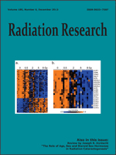
RADIATION RESEARCH
Pioneering research in biophysics and radiation technology.RADIATION RESEARCH is a prestigious journal published by the RADIATION RESEARCH SOC that serves as a vital resource for professionals and researchers in the fields of biophysics, radiation science, and radiology. Established in 1954, this journal has consistently advanced the study of radiation's effects on health and the environment, bridging fundamental and applied research. It boasts an impressive impact factor reflected in its quartile rankings, including Q2 in Biophysics and Q1 in Radiation, making it a highly regarded publication within its discipline. Researchers will find valuable insights through rigorous peer-reviewed articles that explore innovative methodologies and findings related to radiation exposure, imaging technologies, and the biological consequences of radiation. Although the journal does not currently offer open access, it remains a vital reference for academia and industry, fostering a deeper understanding of radiation sciences and their implications for future research and public health.
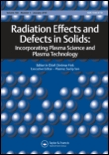
Radiation Effects and Defects in Solids
Advancing Knowledge in Radiation Effects and DefectsRadiation Effects and Defects in Solids is a prestigious academic journal published by TAYLOR & FRANCIS LTD that has been at the forefront of research related to the impacts of radiation on various solid materials since its inception in 1989. With an ISSN of 1042-0150 and an E-ISSN of 1029-4953, this journal serves as an essential resource for researchers and professionals in the fields of Condensed Matter Physics, Materials Science, and Nuclear and High Energy Physics. Despite its current categorization in the Q4 quartile across these disciplines, Radiation Effects and Defects in Solids remains critical for advancing knowledge of material responses to radiation, which is vital for applications in nuclear energy, space exploration, and radiation therapy. The journal publishes original research articles, reviews, and letters that provide insights into material properties, radiation dosimetry, and defect structures, fostering collaboration and innovation within the scientific community. As the field evolves, Radiation Effects and Defects in Solids continues to play a significant role in disseminating valuable research findings and keeping pace with emerging trends in materials science and radiation physics.
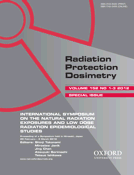
RADIATION PROTECTION DOSIMETRY
Exploring the forefront of radiation protection and health physics.RADIATION PROTECTION DOSIMETRY is a vital academic journal dedicated to the field of radiation protection, published by Oxford University Press. With an ISSN of 0144-8420 and an E-ISSN of 1742-3406, this journal serves as a platform for groundbreaking research and developments in dosimetry, health physics, and radiation safety spanning over four decades since its inception in 1981. Recognized with a Q3 ranking in multiple categories including Medicine (miscellaneous) and Public Health, this journal plays a key role in disseminating important findings that inform policy, enhance practice, and promote the protection of both individuals and the environment from radiation hazards. While currently not available as Open Access, the journal's curated content is essential for researchers, professionals, and students dedicated to advancing knowledge in radiation protection and related areas. Interested readers will find the latest research trends, case studies, and reviews invaluable for their work and studies within this multidisciplinary domain.

International Journal of Radiation Research
Illuminating Innovations in Radiology and ImagingThe International Journal of Radiation Research, published by the IJRR-IRANIAN JOURNAL RADIATION RES, serves as a critical platform for researchers and professionals in the fields of radiology, nuclear medicine, and imaging technology. Since its inception in 2003, this peer-reviewed, open-access journal has focused on disseminating significant findings and advancements, contributing to the global discourse on radiation research. With an ISSN of 2322-3243, the journal offers valuable insights into emerging technologies and methodologies, maintaining a commitment to enhancing the understanding and application of radiation in medical science. Although currently positioned in the Q4 category across its scopes, the journal strives to elevate its impact by promoting high-quality research and innovative practices. The journal is accessible to a wide audience and encourages submissions from scholars worldwide, directly supporting the advancement of knowledge in radiological and ultrasound technology. For those seeking to explore and contribute to this dynamic field, the International Journal of Radiation Research represents an invaluable resource.

Journal of Medical Imaging and Radiation Sciences
Shaping the future of medical imaging and radiation research.Journal of Medical Imaging and Radiation Sciences, published by Elsevier Science Inc, is a prominent platform dedicated to advancing research and knowledge in the field of medical imaging and radiation sciences. With an ISSN of 1939-8654, this journal plays a crucial role in disseminating innovative studies and insights from 2008 to 2024, providing a valuable resource for researchers, professionals, and students alike. It is positioned within the Q3 quartile in both the categories of Radiological and Ultrasound Technology and Radiology, Nuclear Medicine and Imaging, indicating its growing influence and contributions to these critical areas of healthcare. While it currently does not offer open access, authors benefit from the journal's rigorous peer-review process, ensuring high-quality publications. As the landscape of medical imaging continues to evolve, the Journal of Medical Imaging and Radiation Sciences stands out for its commitment to education and innovation, inviting contributions that explore the latest technological advancements and clinical applications.

Nuclear Physics and Atomic Energy
Advancing knowledge in nuclear physics and energy.Nuclear Physics and Atomic Energy is a reputable open-access journal that focuses on the fields of nuclear physics and high-energy physics, providing a forum for researchers, professionals, and students to share their findings and advancements. Published by the Institute of Nuclear Research, National Academy of Sciences of Ukraine, this journal has been committed to disseminating knowledge since its inception in 2006, ensuring that scientific advancements remain accessible to a global audience. With an ISSN of 1818-331X and an E-ISSN of 2074-0565, the journal features a diverse array of articles that span the continued exploration and application of nuclear phenomena. Although currently categorized in the Q4 quartile for Nuclear and High Energy Physics in 2023, the journal is steadily working towards increasing its impact and engagement within the academic community. With a Scopus rank of #74 out of 87 in its category, it serves as a valuable resource for advancing crucial research in a vital scientific area. Researchers are encouraged to contribute their innovative studies to foster collaboration and knowledge sharing in this dynamic field.
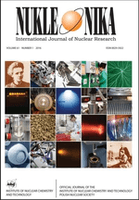
NUKLEONIKA
Empowering the Scientific Community Since 1968NUKLEONIKA, published by SCIENDO, is a leading open access journal that has been serving the scientific community since its establishment in 1968. Focused on the domains of Nuclear and High Energy Physics, Condensed Matter Physics, and Nuclear Energy and Engineering, this journal provides a platform for innovative research and technological advancements in a variety of interdisciplinary fields. With an impressive history of publications and a current Q3 ranking in several categories, including Safety, Risk, Reliability and Quality and Waste Management and Disposal, NUKLEONIKA is recognized for its significant contributions to scientific discourse. Open access since 2014, the journal ensures that all research outputs are freely available, facilitating broad dissemination and accessibility for researchers, professionals, and students alike. Located in the heart of Warsaw, Poland, NUKLEONIKA aims to inspire collaborative efforts and foster a deeper understanding of complex physical phenomena and their practical implications.
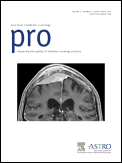
Practical Radiation Oncology
Bridging Science and Practice in OncologyPractical Radiation Oncology is a premier journal published by Elsevier Science Inc., focusing on the critically important fields of Oncology and Radiology, Nuclear Medicine, and Imaging. With an ISSN of 1879-8500, this journal serves as an essential resource for professionals and researchers dedicated to advancing the practice and research of radiation oncology. Established in 2011 and continuing through 2024, it has quickly gained recognition, achieving a prestigious Q2 ranking in Oncology and an exceptional Q1 ranking in Radiology, Nuclear Medicine, and Imaging as of 2023. The journal, housed in New York, USA, provides a platform for innovative research and practical insights, aimed at enhancing therapeutic practices and improving patient outcomes. As part of its commitment to fostering scientific dialogue, it also features a range of articles, reviews, and clinical studies that cater to the diverse interests of its readers. Hard-copy availability combined with digital access ensures a broad reach for the latest advancements in the field.